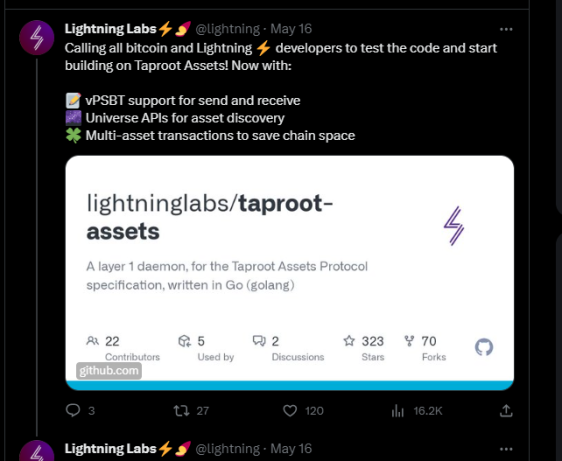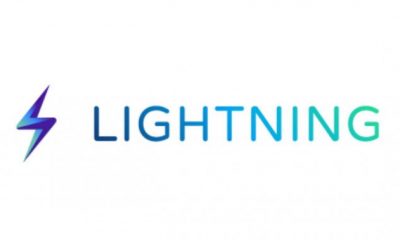Lightning Network
Get Ready for Taproot Assets on Lightning

Lightning Labs has entered the Bitcoin token issuance race with the introduction of Taproot assets. Issuing assets on the Bitcoin blockchain is a double-edged sword. On one hand, it expands the functionality and usability of Bitcoin. Reversely, it adds to network congestion.
Lighting Labs' latest development seeks to solve this problem. Taproot assets are described as the “new era” in the evolution of the world's first cryptocurrency by the director of development at Lightning Labs, Ryan Gentry. In a recent post, he explained how they make Bitcoin a multi-asset network.
How Taproots Work
Taproot assets enable developers to create on the Bitcoin blockchain with ease. The system streamlines the creation process by reducing blockchain interactions to institute minting processes for multiple assets. This approach is more scalable compared to BRC-20 tokens which add data to the main chain every time a token gets created.
Stablecoins on Bitcoin
Interestingly, the system improves efficiency by only storing the commitment to the assets on the mainnet. Notably, you can issue assets directly on the Lighting network as well. These tokens will not need to use the Bitcoin mainnet for the majority of their actions. The protocol will enable developers to issue stablecoins as well.

Source – X – Taproot Assets
Scalable
Scalability is the main draw for Taproot tokens. They lower the mainnet interactions without reducing security. As such, there are many who see this option as a better solution. Currently, the BRC-20 tokens sector continues to expand, which has left some worried. As with any new Bitcoin development that affects congestion, the debate is now on.
The rise of BRC-20 tokens has the community split on using non-standard taproot transactions with a growing group calling to ban them. However, this maneuver would go in the face of the network's anti-censorship perspective. Taproot assets remain compliant to standard transactions and create less traffic which makes them a decent compromise for all parties involved in the discussion.
Taproot vs BRC-20 – Room for Both
As the debate heats up regarding issuing assets on Bitcoin, there are some key differences that make each asset unique. Both tokens live on the Bitcoin blockchain but Taproot only needs to access the blockchain once to mint multiple assets. This strategy lowers congestion, which has led the BRC-20 token standards developer, DOMO, to give Taproot assets a nod of approval.
Taproot assets use Bitcoin network validation properties to remain valid and authenticate. Additionally, Taproot assets can be transferred faster than BRC-tokens when issued directly onto the Lightning Network. According to Lighting Labs, a testnet will open soon which should give developers a chance to demonstrate their skills and creativity.
Lightning Labs
Lighting Labs, the development community behind the project has a long history of pioneering Lighting Network technologies. The group is one of the core teams behind the second-layer protocol's success and their latest introduction is sure to help drive adoption further.
Start Building on Bitcoin
The integration of Taproot assets and other ways of creating on the Bitcoin network demonstrates Bitcoin's flexibility and adaptability. You can do your part and start building using Taproot assets and help to expand Bitcoin adoption and awareness today.









